May 21, 2025 | 01:08 GMT +7
May 21, 2025 | 01:08 GMT +7
Hotline: 0913.378.918
May 21, 2025 | 01:08 GMT +7
Hotline: 0913.378.918
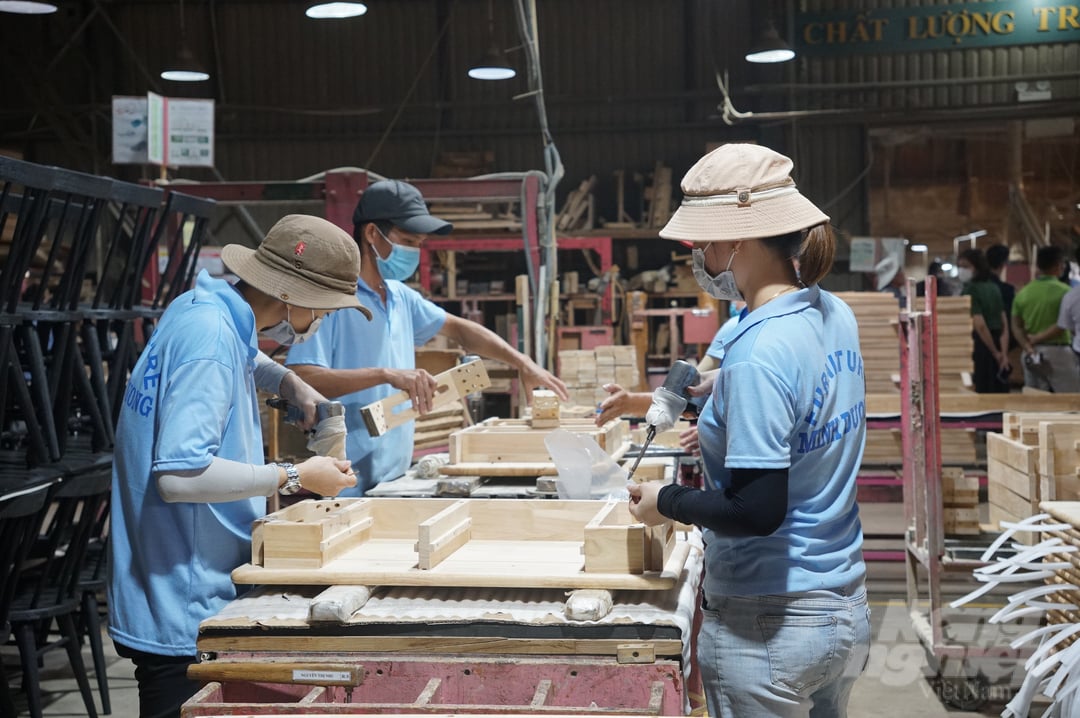
Workers of Minh Duong Furniture Corporation are completing export orders to the Japanese market. Photo: Nguyen Thuy.
According to the Financial Director of Minh Duong Furniture Corporation in Thuan An City, Binh Duong Province, Diep Bao Tri, the annual capacity of its factory reaches 2,500 40ft containers, exported to Europe, America and some Asia countries.
Every year, the factory has to use about 25,000-30,000 cubic meters of timber, 30 per cent of which has domestic origin and 70 per cent is imported, mainly from the US.
Before domestic timber is purchased, the specialized department must verify that the suppliers are authorized, the timber is exploited from licensed forests and it has been certified by local forest rangers during the exploitation process.
“The trading only takes place after everything has been examined. When a legal batch of wood is brought to the warehouse, it would be coded,” Tri said.
The coding process aims to support the management, he noted. The code implies the basic information such as the wood variety, the seller and date of purchase, which makes it easy to trace back and resolve all claims related to the origin. It helps the corporation to ensure the legality of the timber and earn sustainable values.
In order to export goods to Europe, Tri revealed that the businesses must have FSC (Forest Management certification), provide a brief overview of the business to customers and accountability for legal and sustainable timber.
The corporation has participated in the business classification assessment process, one of the contents of the VPA/FLEGT Agreement, and is classified in group 1 - good compliance (class 1) under Vietnam's timber legality assurance system (VNTLAS).
At the end of 2023, after receiving the FLEGT license, the products of the corporation will be cleared immediately upon arrival at the border gate and the exporter is not required to carry out any additional accountability for the traceability of any legal timber.
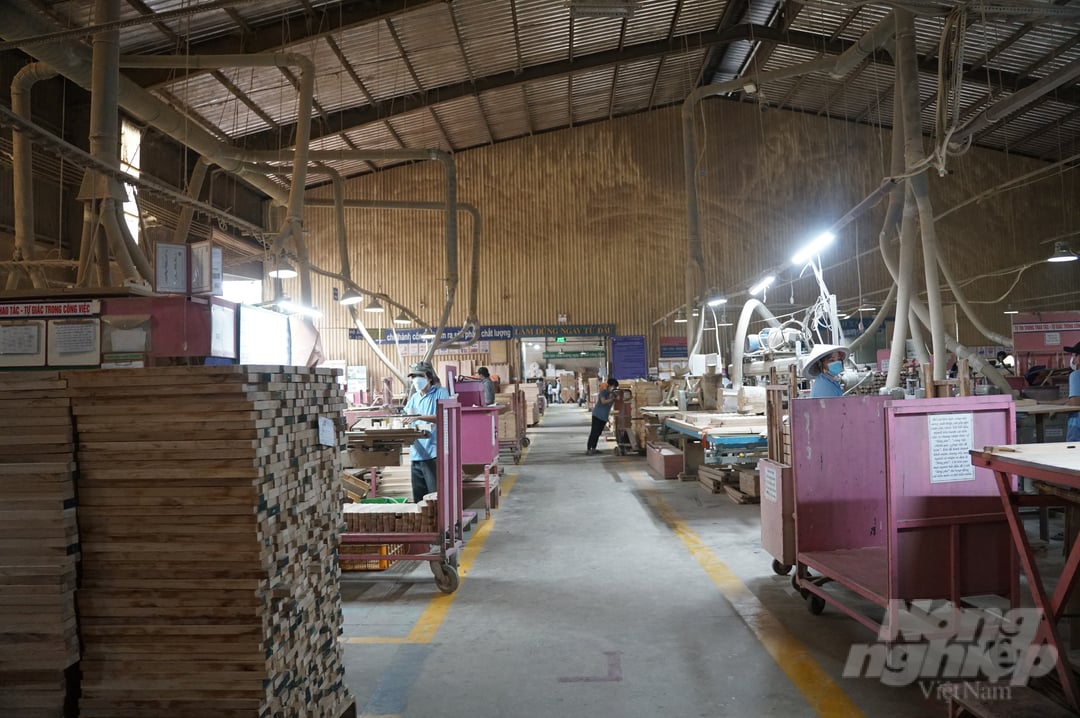
Among the 10 key export commodities of Binh Duong Province, wooden products continues to take the lead and is rated as the fastest-growing export and production sector, earning an average turnover of over $500 million/month. Photo: Nguyen Thuy.
In 2021, Vietnam's exports of wood and wood products reached US$14.21 billion, up 17.6 per cent; in which Binh Duong is the leading locality with a value of $6.12 billion, accounting for 43 per cent of the total export turnover of the country.
According to Binh Duong Customs Department, the export value of wood and wood products of the province is estimated at $3.3 billion by the end of June 2022. The impressive figture partly shows the role of Binh Duong - the province that tops the export value of the country and makes a significant contribution to the development of Vietnam's wood industry.
Vietnam's furniture manufacturing and exporting sector strives to reach the export target of $18 billion in 2022. Binh Duong, the “wood capital” of the nation that is home to 1,215 key wood processing and exporting enterprises, strives to account for nearly 50 per cent of the country's total wood export turnover.
According to Chairman of Binh Duong Furniture Association (BIFA) Nguyen Liem, thanks to free trade agreements in the processing industry, Binh Duong have been facilitated in introducing wood products to many markets and in competing with other countries. The Trade Facilitation Agreements (TFA) have also created many advantages for Vietnam's wood industry when the tax rate is gradually reduced to zero and thereby attracting investment from the EU to Vietnam. The US market has identified Vietnam as an important link in the supply chain.
He added that the export target of Vietnam's wood industry from $17.5 to 18 billion in 2022 can be completely achievable. Specifically, five key export products: chairs will reach $4.1 billion, furniture about $10 billion, wood chips about $2.1 billion, pellets about $0.6 billion and plywood about $1.3 billion.
The products that are attracting great attention are chips and pellets, industrial materials (interior - exterior furniture), as there is a very strong production shift from other countries to Vietnam. Timber enterprises specialised in industrial materials focus on producing for the US market, while the Japanese market has a great demand for wood chips and pellets.
According to Liem, wood enterprises in Binh Duong Province can well perform their "core" role in maintaining export capacity.
However, the wood industry is facing difficulties, especially in terms of consumption as large markets such as the US, Europe, and Japan... have all narrowed their consumption.
They have also faced difficulties in applying the provisions of free trade agreements in general and voluntary partnership agreements on forestry law enforcement, forest governance and trade in forest products in particular.
It is required that each Vietnamese enterprise in general and in Binh Duong Province in particular must actively grasp the market and adjust the business plan accordingly. At the same time, they must comply with Vietnamese and international requirements in ensuring legal and sustainable timber in the supply chain to expand the market.
Translated by Phuong Ha

(VAN) Oliyar, a prominent Ukrainian oil and fat manufacturer, has revealed plans to build a farm for 2.3 million laying hens in the Lviv region. The additional production quantities promise to change the competitive landscape of the egg market of the Eastern Europe region.
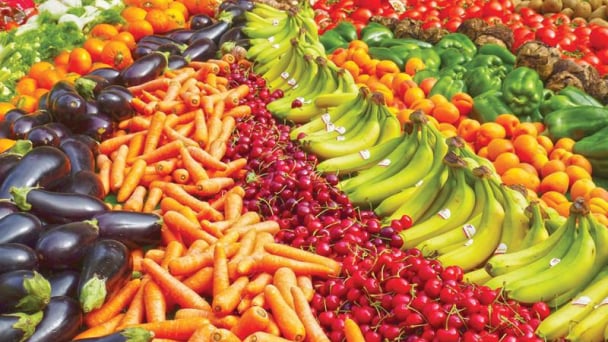
(VAN) On May 15, Ministry of Agriculture and Environment of Vietnam hosted the 'Connecting Vietnam - Germany agricultural, forestry and fishery trade' seminar in Berlin, Germany.

(VAN) In the face of counterfeit and imitation products, Khanh Hoa Salanganes Nest Company hopes for the prompt completion of the legal framework, strict enforcement against violations, and protection of the bird’s nest brand.
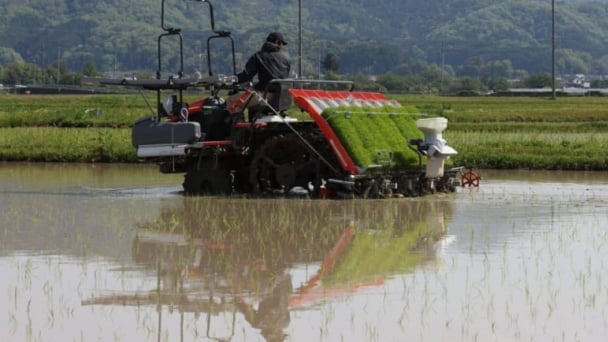
(VAN) Japan's efforts to lower the price of rice through the release of its stockpile may finally be making some progress, albeit at a snail's pace.
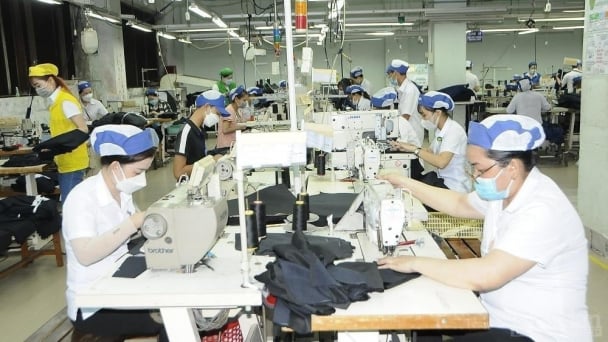
(VAN) U.S. tariffs are not only a 'shock', but also an opportunity for Vietnamese businesses to renew their mindset toward comprehensive development.
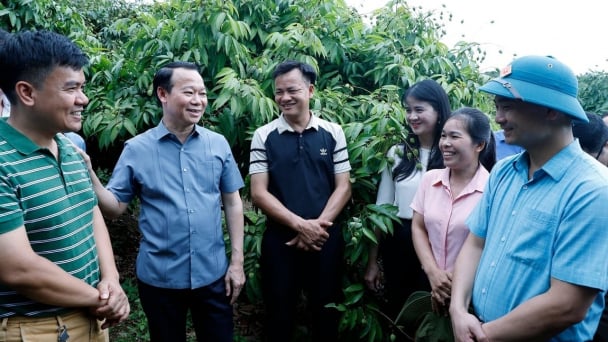
(VAN) As Bac Giang lychee enters the harvest season, Minister Do Duc Duy expects that the fruit will contribute greatly to agricultural exports due to standardized production and deep processing.
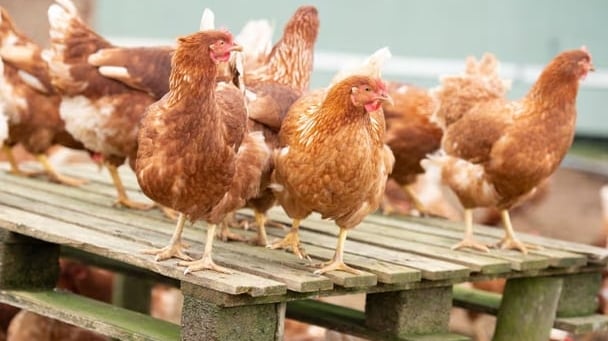
(VAN) Consumers have shown a preference for free-range eggs, but those farming systems are more vulnerable to biosecurity risks like bird flu.